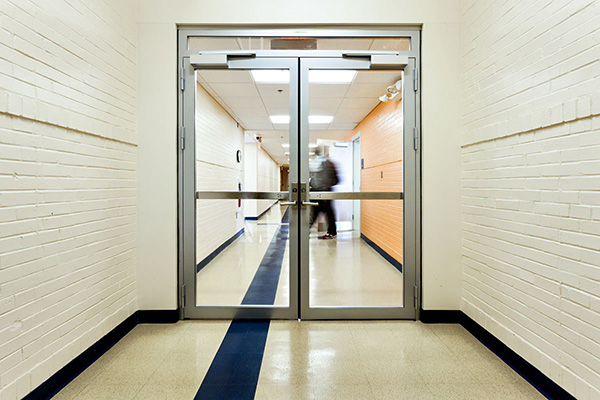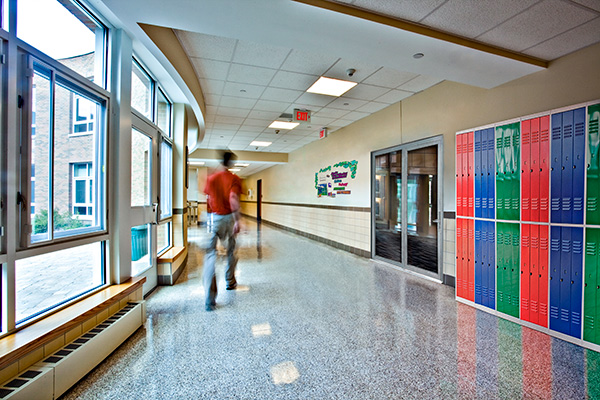
Doors with impact-safety-rated glass are able to withstand various levels of impact. For example, when CPSC 16CFR 1201 (Category II) impact-safety-rated glass is struck by an object comparable to a full grown, fast moving adult, it does not shatter, or shatters in a safe pattern to prevent injury.
Prior to the development of the 2006 International Building Code (IBC), the fire-rated glass in doors was only required to satisfy minimal impact performance requirements, even in areas that would normally be required to provide high-impact tempered or laminated safety glazing by building code. Today, fire-rated glazing in all hazardous locations, as specified in IBC Sections 2406.4.1 through 2406.4.7, must also pass an impact safety test. Because doors are often subject to frequent human impact and installed in hazardous locations, all glazing in doors must meet impact-safety criteria. This also typically applies to fire-rated glazing adjacent to or near the door, including sidelites or glass located near the floor.
Since not all fire-rated glass products provide impact safety protection, it is important to verify the selected offering meets either CPSC 16CFR (Category I) or CPSC 16CFR 1201 (Category II) impact classifications, as determined by the application. Fortunately, with the option to select from products like laminated fire-rated glass ceramic and fire-resistive glazing products that provide up to Category II impact-safety ratings, there is no need to choose between fire safety or impact safety. In fact, the codes no longer allow it.

Over the last decade, the rise in active shooter events has fueled advances in manufacturing, resulting in new security glazing options to mitigate these risks. For example, for schools needing a complete, integrated fire and security system, there are now options like Pilkington Pyrostop® laminated to School Guard Glass®. Pilkington Pyrostop is a fire- and impact safety-rated glazing material that blocks radiant heat, while School Guard Glass is a laminated glass product with a security strengthened substrate core designed to slow down intruders. By combining these two proven products, the resulting glazing solution is fire rated for 45 to 120 minutes, impact safety-rated to meet Category I and II requirements and UL 752 Level III bullet-resistance ratings.
Today, more than 40 different voluntary tests apply to security issues, though provisions are not currently mandated in building codes.